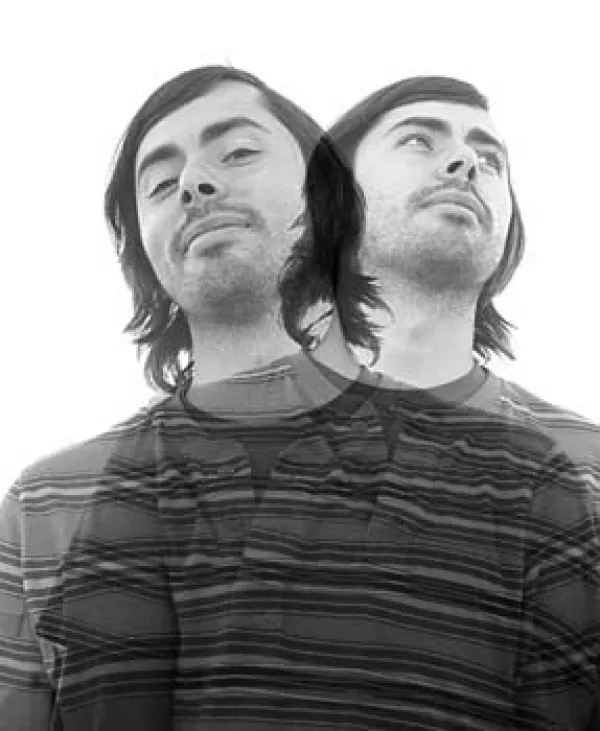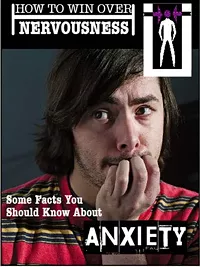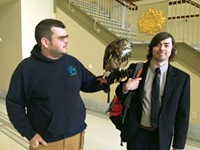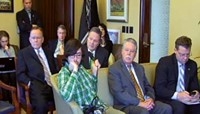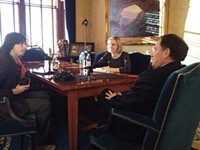So Your Brain Wants You Dead ...
A mentally ill reporter's battle with his job and himself
By Ryan Cunningham @RyCunn
It starts by feeling like you’ve just done something horrible, something unthinkably awful—like you’ve just told your mother you hope she dies, and then she does.
Professionals have trained me to assess this feeling with an objective evaluation, as if I’m an outside observer of my own brain. I’m supposed to ask myself, “What is the source of this feeling? Does it have a source? Is that source (or non-source) justified in provoking this feeling? Do I truly want to die, or is that just a primeval, fight-or-flight demon screaming between my eyes and vomiting fire into my chest?”
Sometimes this approach is effective. Sometimes it fails. And when it fails, I hide. I hide in the bathroom of my office. I hide under the covers of my bed at home. I hide wherever witnesses are absent and my brain is omnipresent. I want someone to be there, but frankly, I don’t trust many people to absorb that level of vulnerability gracefully. It’s a lonely feeling.
That’s when it’s internal.
Then there’s the external. From a clinical perspective, you could call it “social.” It usually happens when I’m around a girl I like, or when I’m around, say, Utah Senate President Wayne Niederhauser. In particular, this happens when I’m sitting a few feet from him as a reporter representing Salt Lake City radio station KCPW, and I’m mentally preparing myself to ask a contentious question—a question about, oh, same-sex marriage or Medicaid expansion.
I start to shake. Physically, visibly shake. I’m holding a shotgun microphone, and it becomes increasingly difficult to hold it still enough that I’m not recording the vibrations of my trembling hand. As Utah Senate President Niederhauser responds to my question about LGBT non-discrimination bills, I can’t move my face. If I try to smile or open my mouth, my lips start to quaver and my jaw shivers, as if I’m sitting naked in a meat locker.
Sitting in the presence of Utah Senate President Niederhauser, I am a sudden, loud noise away from shitting my pants and fainting.
And after each such encounter, as I sit in the legislative cafeteria attempting to insert a grilled cheese sandwich into my numb mouth with wobbly hands attached to rubber arms, I can’t help but ask myself: Is being a public-radio reporter really the most suitable career for someone with crippling social anxiety and bipolar disorder?
So You Want to Be a Reporter ...
When I first started as a public-radio reporter at Utah Public Radio in Logan, I overwhelmed my (very first) girlfriend at the time with all of the insecurities that plagued me at my new job. She was supportive, but after hearing me express dread about nearly every aspect of radio reporting, she wavered.
“I think you have to ask yourself,” she said, “is this the right job for you?”
That’s a fair question.
That will always be a fair question, because it’s a very, very tough job for me sometimes. Sometimes, being a radio reporter with my level of social anxiety is a bit like wearing a wool sweater when you’re allergic to wool. But, even when my mental illness is at its worst, I always want to feel useful. So much of the pain of mental illness derives from that feeling that you have nothing to offer anyone—that with your illness, you’re a burden to everyone around you.
So, what is bipolar disorder? Here’s the gist of it: Sometimes you’re too high, sometimes you’re too low—and in either case, you could end up hurt or dead. But by even attempting to define bipolar disorder, I risk doing a disservice to anyone living with the disease. It is a very personal disease, and those diagnosed (about 3 percent of all people) have widely varying experiences. Bipolar disorder is not diagnosed lightly, and many of those diagnosed have suffered more than they could ever articulate. If you meet someone who’s been touched by bipolar disorder or any mental illness, just remember this: You’re lucky they’re still there to meet you.
I was diagnosed with social-anxiety disorder at the same time I was diagnosed with bipolar disorder. Think of bipolar as the main course and the social anxiety as the Sriracha hot sauce distributed liberally throughout. Sometimes, all I can taste is the Sriracha.
Thing is, this stuff doesn’t go away. There’s no cure. I can’t pick myself up by the bootstraps. There will be days when I’m simply not the person I want to be. While I don’t want to make excuses for that, perhaps it would be fair to my co-workers if I at least gave them an explanation. On bad days, I could go home and bitterly stew over being misunderstood—or I could at least have the assurance that I’ve allowed my co-workers (and really, all the people in my life) some chance to understand.
Most people want to understand this stuff, anyway. So let me explain.
So You’ve Always Been Like This …
I was a stubborn, moody little shit when I was a kid.
As a toddler, I was prone to bouts of extreme irritability. To vent my frustrations, I would often kick my mom in the shins, hard. She bore the bruises of my brutality on her legs for much of my early childhood. There was no reason for it, if you’re wondering. My mom is and always has been a sweet woman who’s protective of each of her five children. I kicked her in the shins with all my might because I didn’t have the capacity to stop myself.
My aggressive behavior didn’t stop with my mom. My brother Chris, who’s a year younger than I, was the reluctant recipient of repeated blows to the wiener. I also remember beating him up in the back of my grandpa’s pickup truck and feeling really, really good about it.
I’ve never admitted this to anyone before: In first grade, there was a new kid in our class. He was kind of slow. His misbehavior frustrated the teacher, so I felt fully justified in pushing him around when we were out on the playground for recess. I would shove him and say things like, “What’s wrong with you? Why are you so stupid?” He looked confused and hurt.
Within a week, he was sent down a grade level, and I never saw him again.
By the time I was a teenager, a dark storm cloud had settled over my head. Most of the time, it was the usual angst you’d expect from a young smart-ass. Other times, it was deeper than that. Quietly, I questioned the point of living. I saw no meaning in my day-to-day life, and it didn’t seem like it was going to get better when I got older.
As morbid as that sounds, most people probably would’ve witnessed a well-adjusted, socially adept young man. I was an active participant in drama club, playing Puck, the lead role in William Shakespeare’s A Midsummer Night’s Dream, when I was a high school junior. I was elected Class Clown by my 475 graduating peers—still one of my proudest distinctions. I was also selected (by peer vote) to be my class’s male salutatorian at graduation, and I gave probably the best speech of my life in front of several thousand people packed into the high school gymnasium.
But here’s what’s also true: I never had a girlfriend, and my first kiss (outside of one game of Truth or Dare when I was 16) wouldn’t come until age 25. I never had more than a couple of close friends at a time, and most of my friendships were lucky to last longer than a year. My four younger siblings feared me and my irrational mood swings. For every great height, there was a great crash. Nothing was constant. I started making a habit of mitigating my pain or bottling it up—after all, I couldn’t kick my mother’s shins anymore.
So It’s Officially Offensive to Call You “Crazy” …
When I first went to college, I suffered the worst depression of my life up to that point. I was constantly without energy, and everything I did seemed purposeless. Some might chalk that up to the freshman blues, but the feeling persisted for months—and even into the summer.
I went to my family doctor, who prescribed me Lexapro, a fairly common antidepressant. After about a month, I went back for a checkup.
“How do you feel?” he asked.
“About the same,” I answered.
“OK.”
So he doubled my dose.
That worked for about a year and a half. I still had my bouts of loneliness and despair, but they were muted. I thought persistent sadness was pretty normal.
I felt the most pain in those times after elation. When you get up high, you have to come back down, and I hated coming back down. So my solution was to stop getting up high.
Most people in the self-discovery stages of bipolar disorder would probably try to stay high by engaging in increasingly risky behavior. Call it self-control, call it martyrdom, call it spending my college years in Logan; my journey to bipolar diagnosis is mostly landscaped with staying at home and avoiding the unpredictability of humans.
But then I made the life-changing decision to study abroad in the Netherlands for my junior year of college, and I had a pretty damned good time. And that was the problem: Every high in my life has been followed closely by a debilitating crash. This was no different.
After a couple of dark weeks, I found myself standing by a ledge seven stories above the ground.
It wasn’t that I didn’t want to live anymore—I just didn’t think I could tolerate the pain I felt without being so profoundly damaged by it. Imagine falling into the bubbling, lava-filled caldera of a volcano and feeling your body melt into the molten rock around you. Do you want to die, or do you want your body to stop melting?
Some good friends watched over me until I was sent back home for hospitalization, diagnosis and treatment. I didn’t finish the semester. Not even three years into college, I was finding out that my journey to adulthood would be saddled with unique challenges.
So You Hate Everyone as Much as You Hate Yourself …
A lot has happened to me since I came back from Amsterdam. There’s been a lot of pain—some mental and emotional, some self-inflicted with knives and flames. I tried to kill myself once. I’ve been hospitalized a few times, and I’ve been treated with electroconvulsive therapy, Kitty Dukakis-style. My editors would love for me to recount some of the more outrageous, One Flew Over the Cuckoo’s Nest-esque details formative to me as a patient of mental illness. I’d love to talk about it, too. I wish I could wear every horrific incident as a merit badge on a Boy Scout’s uniform. But I didn’t write this particular piece to win you over with the shock-and-awe of my cranial diseases. If you knew and understood absolutely everything I’ve been through since Amsterdam—since college, since high school, since I was a toddler—there wouldn’t be much to explain. Everyone wants to be understood. Realizing no one would ever fully understand what I had been through was one of the hardest—and most important—realizations I ever made.
I made that realization at a desperate moment in life, at the tail-end of my most recent shock-and-awe era. I was living in my friends’ attic, unemployed, unmotivated and pissed off at humanity for not having a whole lot of sympathy for my invisible problems. After pushing my way through every episode of Battlestar Galactica, I had come to recognize that bitterness had gotten me no closer to a new life.
After a series of odd jobs (some of them pretty goddamned shitty) I re-enrolled at Utah State University in summer 2012. In fall 2012, I got a full-time news internship with Utah Public Radio for the semester.
I had always liked radio as a medium for storytelling, Ã la This American Life, Radiolab and The Moth, and it was at UPR that I learned how to put together a news story for the radio. And not only did I learn that I loved it, but I also learned that I could get pretty good at it if I practiced enough.
By December 2012, I was finally a college graduate. Two months later, I had a job as a technical writer for American Express—just two years after holing up in my friends’ attic, watching hours of Battlestar Galactica.
So You Think Reading
the News is Easy ….
If you need further proof that defeating bitterness is the righteous path, six months after starting at Amex, Salt Lake City public-radio station KCPW hired me to do what I love: the news.
Oh, and by the way, KCPW does news. When I tell people around here which radio station I work for, occasionally there’s that glazed-over look that tells me they’re probably sorting out in their heads what the difference between AM and FM is. We’re not the one that plays music, and we’re not the one that’s papally blessed by NPR. We’re KCPW, and you’ve listened to us, even if you can’t remember.
With me included, about eight people work at KCPW. The expression we use is that we all wear multiple hats. I work as the social-media manager, fill-in on-air host and reporter, which is my primary role.
At heart, I want to be every part of a radio reporter. And I can do all of it really well when I need to. But when one aspect of the job is a little beyond my reach on some days, I can do another—the part when the humans are no longer required—really well. I love sound. I love collecting sound. Some of my favorite moments of being a radio reporter have been walking through a crowd of people with a live microphone, no one knowing or caring that I was there recording their every giggle and footstep. And after that, I love throwing on headphones and putting all the sound together on my computer.
I’m the only reporter at the station that contributes on a daily, full-time basis, so I cover just about everything: education, politics, health care, environment, culture, etc. A curious thing about my reports: If you listen to them closely enough (I guarantee no one except myself does), you can hear very subtle variations in my delivery. Sometimes I sound very suave and newsy. Other times I sound meek and tired. There’s a lot to which I could attribute those slight variations, but it’s possible I’m sharing the state of my mental health with the Salt Lake City radio market in a very intimate way.
Few people at the station know about my mental illness. No one knows the extent to which I’m affected on a day-to-day basis. Of all the things I do, reading live on-air is the hardest, especially in terms of anxiety-inducing tasks. The first time I did it, I had the simple task of reading some Associated Press stories during our pledge drive. It was supposed to take about three minutes, but for some reason I only brought about 15 seconds of oxygen with me. Put more bluntly, I couldn’t breathe. I had a panic attack live on the radio during a peak hour with perhaps thousands of people listening, and there was nothing I could do. Seeing as I had both been on the radio before and read aloud before, I thought it would be a cakewalk. What I failed to remember was that anxiety just kind of does whatever the hell it wants whenever it wants, and there’s no prevention mechanism for that. It’s as if my brain is a murderous psychopath hiding behind any corner, ready to jump out and swing a knife at me.
After I was done “reading” the news, I stepped outside of the studio and was silently met by all the pledge-drive volunteers. Attempting to lighten the mood (because I was accustomed to this kind of brutal humiliation as someone with both anxiety and an acute tendency to fail), I quoted Gladiator, the Russell Crowe classic: “Are you not entertained?!” I exclaimed. No one responded. They were not entertained. Sometimes grace is only warmly received when it’s not directly preceded by embarrassment.
So You Kind of Hate Doing The News …
Bipolar disorder and anxiety disorder bring separate challenges to my job, but neither seems advantageous.
Being bipolar, the biggest obstacle is perhaps more for my co-workers, who don’t know which distinct variety of Ryan Cunningham they may be getting on any given day—or hour. At one point during the day, I could be incredibly cheerful and energetic, and I’ll hold conversations until no one is talking back. But maybe a few hours later, I may be quick to snap at everyone or paranoid about the intentions of my colleagues. Sometimes I become completely sapped of energy, and I conserve to the point of simply performing the minimal requirements of my job.
While bipolar disorder feels like something that would affect the people around me more, anxiety disorder seems more like an internal nuisance. When I’m at the office, it can creep up into my limbs and try to trap my heart, and I have to get up and pace around to shake it off.
The hardest part of my job, though, is also the most important part: human interaction. A reporter has to talk to a lot of humans. And there are times when those people are reluctant to talk, and they don’t care how hard it was for me to work up the courage to call them.
The legislative session is a different beast of a journalistic beat, especially for someone who mentally and physically falls apart outside of his own comfort zone. Over the course of the 2014 session, I had a pretty bad cold. I slept like an elderly man, and I ate so many grilled-cheese sandwiches that I started to turn into one.
One day, feeling particularly low, irritable and just flat-out exhausted, I snapped.
I came into the KCPW studio to pick up some equipment before heading to the Capitol, and the first person I saw was our station’s CEO. He complimented my appearance, as I was wearing a suit and tie.
It was a nice thing to do. But my response was, “OK! I have to dress nice for the Capitol! Are we over it?!”
I apologized almost immediately, and our news director came over to me to ask if anything was wrong. I knew what was wrong. I was feeling terrible all over. I was falling into a depressive state, and my nerves were too weak to deal with just about anything outside of my job.
Instead, with tears welling in my eyes, I told my news director I was going through something “personal,” and he just needed to be patient with me. He obliged.
The last day of the legislative session was capped off by an interview with Gov. Gary Herbert.
I couldn’t do that interview. It would’ve been physically impossible for me to sit across from Gov. Herbert, ask him the questions he deserves to be asked, and appear to be a stable human being. All I could think about was projectile-vomiting grilled-cheese sandwiches all over the governor of Utah for 12 uninterrupted minutes.
But against all odds, I did the interview.
In an attempt to move things along, the interviews were conducted by pairs of reporters. I was paired up with Michelle Price of the Associated Press. While awaiting our golden moment with Utah’s main man, Michelle admitted that she was also nervous, and that when she had to do this same interview in 2013, she had a bad case of dry mouth. Just that simple admission put me at a sub-nauseous level of ease.
The other thing that saved me: Klonopin. That’s right. I interviewed the governor under the influence of a tranquilizer.
I used to take Klonopin with regularity, but three years ago, I began abusing it with alcohol. Needless to say, the drug lost its potency, and I lost the confidence in myself to use it responsibly. I went cold turkey, and I never used it again.
Never, that is, until about 45 minutes before my chat with Gov. Herbert. And, thank goodness, it worked like a charm. With Klonopin, all physical signs of my anxiety—the trembling, the twitching, the shaky voice, the shortness of breath—went away. I was still anxious, but the anxiety didn’t take control of my body.
So You Think You Know Who I Am…
Since I started working on this piece, a lot of people have lauded me for having the courage to tell my story. I’m never good with compliments, but I’m always appreciative regardless. Still, I have to admit that I don’t feel courageous. I’m rather audaciously presuming that my life story will be interesting to everyone, and that somehow what I do on a daily basis warrants front-page attention on a major local newspaper. That doesn’t sound like courage to me.
But how about this for courage: How many people do you know for a fact fight mental illness at your workplace? If you’re struggling to think of anyone, then you’re either self-employed, or you live in a culture that still isn’t totally comfortable with acknowledging one of the most debilitating sets of ailments imaginable. Because here’s the simple truth: There’s next to no chance that you won’t interact with someone touched by mental illness today.
Think about that the next time you leave your house. Think about that when you go to the grocery store and someone gives you a dirty look in the cereal aisle. Think about all the times when you interact with another human being, and you’re perplexed by someone’s rudeness or despondence or uncomfortable elation.
Understanding mental illness is not about saying the right things or having the most progressive, enlightened perspective informed by a cutting-edge blog. Understanding mental illness is about the most basic principle of human dignity: kindness. Be kind, assume nothing and know that the guy you sit next to at the office might be trying to decide whether to answer all of his e-mails or go cry in the bathroom. Your own brother or sister or mother or father could have self-inflicted scars that they’re hiding, even from the people that would love them no matter what. Anyone you bump into on the street could have just conducted a failed suicide attempt—an attempt they’ll never tell anyone about.
And a public-radio reporter, interviewing you for one of his mundane daily reports, could have been very close to taking his own life a few years ago.
My name’s Ryan. It’s nice to meet you.
May is mental-health awareness month. Visit the local chapter of the National Alliance on Mental Illness at NAMIUt.org for information on special events and classes.
More by Ryan Cunningham
-
Writer Chris Stewart Warned Us. But Does Congressman Chris Stewart Care?
Russian intrigue, international espionage, nuclear doomsday scenarios—it can all be found in the congressman’s 1997 debut novel.
- Mar 7, 2018
-
15 Ways to Fix SLC
Handy tips and tricks to ensure the survival and growth of our fair town.
- Aug 23, 2017
-
A Seagull Story
Why a bug-eating trash bird makes Utah proud.
- Feb 15, 2017
- More »
Latest in Cover Story
Readers also liked…
-
Forget the family pedigree—Robert F. Kennedy Jr should not be the next president of the United States
Trojan Horse
- Jun 21, 2023
-
Women decry harassment and toxic culture at St. George auto dealership
Men at Work
- Oct 11, 2023


